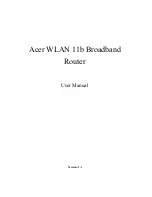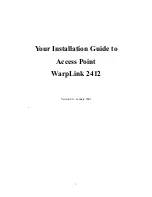
TOBY-R2 series - System integration manual
UBX-16010572 - R10
Design-in
Page 87 of 151
Guidelines for RF transmission line design
Any RF transmission line, such as the ones from the ANT1 and ANT2 pads up to the related antenna
connector or up to the related internal antenna pad, must be designed so that the characteristic
impedance is as close as possible to 50
.
RF transmission lines can be designed as a micro strip (consists of a conducting strip separated from
a ground plane by a dielectric material) or a strip line (consists of a flat strip of metal which is
sandwiched between two parallel ground planes within a dielectric material). The micro strip,
implemented as a coplanar waveguide, is the most common configuration for printed circuit board.
and
provide two examples of proper 50
coplanar waveguide designs. The first
example of RF transmission line can be implemented for 4-layer PCB stack-up herein described, and
the second example of RF transmission line can be implemented for 2-layer PCB stack-up herein
described.
35
µ
m
35
µ
m
35
µ
m
35
µ
m
270
µ
m
270
µ
m
760
µ
m
L1 Copper
L3 Copper
L2 Copper
L4 Copper
FR-4 dielectric
FR-4 dielectric
FR-4 dielectric
380
µ
m 500
µ
m
500
µ
m
Figure 42: Example of 50
coplanar waveguide transmission line design for the described 4-layer board layup
35
µ
m
35
µ
m
1510
µ
m
L2 Copper
L1 Copper
FR-4 dielectric
1200
µ
m 400
µ
m
400
µ
m
Figure 43: Example of 50
coplanar waveguide transmission line design for the described 2-layer board layup
If the two examples do not match the application PCB stack-up the 50
characteristic impedance
calculation can be made using the HFSS commercial finite element method solver for
electromagnetic structures from Ansys Corporation, or using freeware tools like Avago / Broadcom
AppCAD (
https://www.broadcom.com/appcad
), taking care of the approximation formulas used by
the tools for the impedance computation.
To achieve a 50
characteristic impedance, the width of the transmission line must be chosen
depending on:
the thickness of the transmission line itself (e.g. 35
µ
m in the example of
and
the thickness of the dielectric material between the top layer (where the transmission line is
routed) and the inner closer layer implementing the ground plane (e.g. 270
µ
m in
, 1510
µ
m
















































